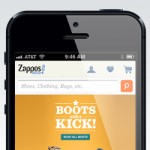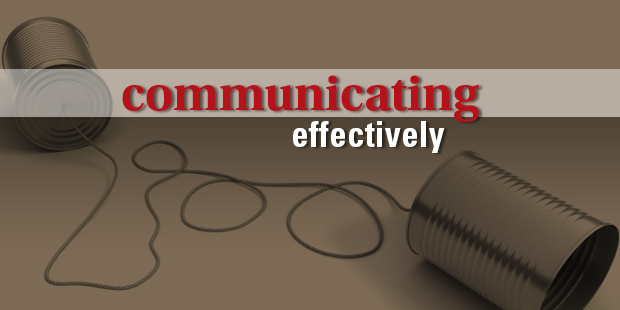
A Vision Analysis of the Kony 2012 Video
You must be an active subscriber to view this premium content. Subscribe or Login.

Tags: Articulating Vision Proper, Awareness, Kony 2012, Will Mancini

You must be an active subscriber to view this premium content. Subscribe or Login.

Tags: Articulating Vision Proper, Awareness, Kony 2012, Will Mancini



Over the years the Auxano Design team has helped churches think more strategically about guest engagement. (Read 10 Mind Blowing Facts to Fuel your Hospitality Ministry). One great idea is to create a separate website for guests. At Auxano, we call this a “buzzsite.”
To catch an example, check out Gateway’s WelcomeToYourJourney.com or First Baptist’s ExploreFirst.org
Why have a dedicated site just for guests at your church?
1) Make a Bigger Front Porch: Eighty-seven percent of your guests will click-thru before they walk-thru. Having a site dedicated to guests enables you to communicate more guest information in a more useful way.
2) Smooth the Path: Guest have mini-hurdles coming to your church for the first time. They don’t know where to go, or what to do. A guest site will enabling them to “get a feel” ahead of time, as a simple way to make them feel more welcome. Notice how Gateway walks your through these key guest decisions from parking lot to checking in children.
3) Show you Care: When a guest enters the dedicated site, it will show that you are expecting guests and that you care about their experience.
4) Resolve Conflict: Having a dedicated guest site alleviates the burden on your main church site to speak to both members and guests.
5) Show Some Personality: A guest site can introduce your church with with a story, promise or creative element. Gateway Community Church used the tagline “Welcome to your Journey” as their URL. It enabled the moment of introduction to include something to spark the imagination and draw people in rather than just saying “visit our church.”At First Baptist Dallas, they creatively use a “Plan Your Visit” form on their ExploreFirst.org to make the welcome experience personalized.
6) Evaluate Your Investment: A guest site can measure the effectiveness of external communication initiatives or campaigns that point to the guest site and not the church’s main site. For example, when Gateway Community Church opened its building, they could know exactly how their six-piece direct mail invitations worked by monitoring web stats when the mail dropped.
Have used a similar site? Let us know about it.

Tags: Awareness, Brand, Guest Experience, Intentionality, Will Mancini



The multisite revolution is underway as more churches nationwide are choosing to launch new campuses. According to Outreach Magazine, 75 of the 100 Largest Churches in America are multisite. There are myriad reasons to explain this transition, the biggest one being the cost efficiency to broaden the church’s reach. Regardless of why, the trend continues.
The idea of “one church, multiple locations” isn’t new to the local church. In fact, it’s as old as the New Testament itself. Perhaps that’s why multisite churches baptize more people, have more volunteers, and produce more diverse communities than single-site churches.
With all the positives, having multiple sites creates unique and specific challenges for churches seeking to organize content, provide value, and accomplish missional goals with their website.
At MonkDev we help thousands of churches use technology to further the gospel. Lately, more of our clients are coming from a multisite community. We partner with these churches to help build out a web strategy that appropriately translates their organization’s mission online. (If that interests you, click here to learn about our Web Strategy Services for Churches.)
We want to spend the next few weeks exploring multisite web presence trends. We’ll unpack one example each week. This week, I’ll provide a brief outline of the specific examples we’re seeing in multisite communities.
Here they are from least common to most:
Trend #1: Universal Website – Multicampus Information
The least common method is to have a universal website representing the entire church while listing information for different campuses in the navigation. This approach works well in a densely-populated area where events throughout the week are available to all and are less “campus” dependent.
The challenge here is usability. This approach requires users to determine what context the content or events apply to. If they aren’t familiar with your community, they may choose not to participate at all.
Trend #2: Standalone Campus Websites
This method works well when one church has multiple locations with separate preaching pastors and/or leadership teams. A church can convey that, while they are bound together in mission, each location has a unique identity. Locations have greater autonomy in developing their web presence.
The challenge presented with this approach is website management. Many church teams struggle with keeping content fresh on one site. Managing multiple websites can add significant content challenges. Be sure to keep cost in mind!
Trend #3: Universal Website – Campus Select Option
This approach is the most common of the three we’ve listed. The biggest benefit here is clearly identifying your site locations and asking you user to self-identify with one of them. Teams managing the website also benefit from keeping church branding uniform. Content is managed easier with this approach, as one person can push content to multiple sites.
Conversely, if you’re not working with a CMS (a content management system like Ekklesia360) with this strategy, you run the risk of duplicating content, pages, etc.
Conclusion on Multisite Web Presence Strategies
Churches who choose multisite have much to think about. According to our own research, 51% of members and visitors stated the church’s website was somewhat to very important in their decision to attend the church. That number, by the way, keeps increasing.
If you’re a member of a multisite community, or even considering it, this blog series will be important for you to follow in the weeks ahead.
To begin this series, go here.
Read more from Justin here.

Tags: Attention, Awareness, Brand, Justin Wise, Multisite



Multisite church planting has gone mainstream. As goes the church, so goes the website. We’re going to go in-depth with the Universal Website with Multicampus Information approach.
As we stated in the introduction to this series, the advantage to this type of site is having all the information under one digital content roof. It works extremely well in densely-populated areas where events throughout the week are available to all and are less campus dependent.
In most cases, the reasons for going multisite revolve around cost efficiency to broaden reach. Why have people drive 30 minutes to a campus when they can drive five and bring more of their neighbors with them?
If, however, a church is in a densely populated area, and mass transit is readily available, the geographical area to work within is much smaller.
Mutlisite communities like this can “blend together” without the need for developing separate identities for each campus. A member might participate in the men’s ministry at one campus and worship at another. Why? The campus for men’s ministry is closer to their work and the worship community campus is closer to their house. Convenience plays a larger factor in church attendance than most would care to admit.
Here are a few examples to consider as you map out your multisite website. While these churches are located in larger population centers, this approach can also be adapted for smaller communities. (For instance, The Leadership Network released a survey that said the median size today for a multisite church is 1,300 attendees.)
Park Community Church – Chicago, IL
When you click the campus links at the top of the page, Park Community Church shows you a “snapshot” for each location.
Each site displays the latest message, a featured event, contact information, and physical address. Great for gauging which location is most relevant for the user.
Redeemer Presbyterian Church – New York City, NY
Redeemer Presbyterian gathers all of their campus information onto one main site. The upper left corner allows users to sift through content for each campus using tabs. The benefit of this approach having all church-related content under one “roof.” The URL is fantastic as well!
Woodlands Church – Woodlands, TX
Woodlands Church lists all of their campuses on one page, giving the addresses, phone numbers, and service times for each location.
Once you’ve located a campus that works, you can view the events for that location. Best feature? The ability to filter events by ministry areas. This approach keeps users in one location, cutting down on distraction and location confusion.
Conclusion
If you’re looking for an easy to way to start with a multisite church website, this approach may be best for you. Leave the microsite and stand-alone site planning for later.
Read the Introduction to this series here; read Part 2 here.
Read more from Justin here.

Tags: Attention, Awareness, Brand, Justin Wise, Multisite, website



We continue our Multisite Church Website series this week by looking at “Standalone Sites.” This is when churches choose to create separate sites for each one of their campuses. (By contrast, you might want to revisit last week’s post on churches who keep all campuses under one digital “roof.”)
This method works well when one church has multiple locations with separate preaching pastors and/or leadership teams. A church can convey that, while they are bound together in mission, each location has a unique identity. Locations have greater autonomy in developing their web presence.
We are working with Harbor Presbyterian here in San Diego to implement this strategy. Harbor chose this method because while it’s one church community, each campus has its own preaching pastor and leadership team.
At Harbor, each campus serves as a local area church with shared central services. Additionally, each campus has its own visual brand, contextualizing each campus for the communities they seek to reach. The church has seven locations and is launching new ones each year, with some being as far as an hour apart.
Here’s what their main site looks like. Note the different locations:
The Chula Vista site:
It should be noted that this approach requires a healthy amount of resources. With separate sites, each online outpost must be managed individually. Content creation, design, and updates must be accounted for on each site.
Aside from Harbor, here are a few more examples of churches who use the “Standalone Site” approach for their multisite website strategy.
Multisite Church Website Example – Highland Park
While Highland doesn’t have a true standalone solution, I chose to include it because each campus site is designed differently. Visually, they’re telling the user these faith communities are different. Some of campuses have their own microsite while others exist as a page on the main site. The giveaway is the URL structure.
Here’s the main site:
Here’s the page for one of their more modern worship communities.
Multisite Church Website Example – Woodlands United Methodist
The Woodlands has a structure similar to Highland Park. The separate campus has it’s own website, URL, and theme. Visually speaking there are similarities between the main site and the Loft campus. They are distinct enough to communicate a difference.
The main site.
The Loft Campus site.
Conclusion
The Standalone Solution would work well for churches who have more of a distributed ministry model. Each campus would be responsible for updating its own content, sermons, events, and ministry info. The downside? It can take more internal resources to manage and execute effectively.

Tags: Attention, Awareness, Brand, Justin Wise, Multisite, website



We conclude our series on Multisite Church Websites with the most common approach of the three, the Universal Website with a campus select option.
One of the most well-known examples of this approach comes from The Village Church in Flower Mound, TX. Let’s jump right in, shall we?
Here’s how you’re greeted the first time you visit the church’s website:
Before you go any further into the site, you’re asked to pick a default campus. This approach works best if you identify clearly where the various campuses are located, as The Village Church has done.
f someone is visiting the site for the first time, they may know nothing about your church and simply want to find the location that’s closest to them. This approach helps them do that immediately and then tailors the web experience for them moving forward.
After you pick a location for The Village Church, your browser automatically remembers your choice each time you come back. If you need to change campuses, you can. Just use the campus selector at the top.
The biggest benefit to this approach is clearly identifying your site locations and asking you user to self-identify with one of them. Teams managing the website also benefit from keeping church branding uniform. Content is managed easier with this approach, as one person can push content to multiple sites.
Here are some other examples of churches using the Universal Website with campus select option:
Biltmore Baptist Church
As you hover over each location, it displays when services are held, what the physical location is, and a link to Google maps. In the case of the online campus, it displays a countdown timer that shows when the next service will go live. Very helpful.
Calvary Chapel Fort Lauderdale
Calvary Chapel Fort Lauderdale helps you to immediately identify what location is nearest/most relevant for you. The “Times & Campuses” tab is prominently displayed in the navigation.
Click on it and you get this beautiful mega nav drop down:
Once you’ve found the church nearest you, you can quickly get to know who is behind each location without having to leave the page.
Conclusion
Building an online presence for multisite churches takes considerable planning, resources, and attention. Coordinating communication efforts across locations, whether two or 20, means forming an organizational-wide strategy and sticking to it. Ministry can, and does, happen online. Help your multisite church accomplish goals by having the right online strategy in place.
This concludes the series. To read prior posts: Introduction; Part 1; Part 2.
Read more from Justin here.

Tags: Attention, Awareness, Brand, Justin Wise, Multisite, website



 I received a sobering yet enlightening Facebook message from my aunt two weeks ago. After getting over my shock that she even knew how to use Facebook Messenger (she is not a technophile), I read her message:
I received a sobering yet enlightening Facebook message from my aunt two weeks ago. After getting over my shock that she even knew how to use Facebook Messenger (she is not a technophile), I read her message:
Aunt: Guess what I got today?
Me: What?
Aunt: The iPhone 5
[cue jaw dropping]
I was reading this on my iPhone 3Gs, yet I’m the one who works at a global post-advertising agency. That’s when I knew it: Mobile has reached significant penetration and can’t be ignored by brands.
There’s more proof than just the fact that my aunt owns her first smartphone (three generations newer than my own). This past Monday, during a panel discussion of mobile marketing at OMMA Global (where Story happened to take home an OMMA award), moderator Matthew Snyder, founder-CEO of ADObjects, Inc., said, “We’ve been hearing since 1995 that next year would be the year of mobile adoption and exponential growth. I think 2010 was finally that year, and now we’re moving toward the next stage of mobile innovation.”
The stats back Snyder up. According to the Flurry Blog, 78 percent of U.S. adults between 15 and 64 years old own a smart device of some kind. The adoption rate of iOS and Android devices has surpassed that of any consumer technology in history; it’s 10 times faster than the one that marked the ’80s’ PC revolution.
A July 2012 survey by Google found that 67 percent of users surveyed are more likely to buy from a mobile-friendly site than they are from one that’s unfriendly, and 61 percent of users surveyed said they’d leave a website if they couldn’t quickly find what they were looking for. So if your site isn’t optimized for a mobile device, then you may as well just redirect your customers to your competition.
A FLAT TIRE
What Zappos.com is to your feet, TireRack.com is to your car. When I blew out the rear right tire on my car last week (pictured at left), I was instantly in the market for new tires. As I sat on the train yesterday, I thought I’d price tires on TireRack.com and possibly purchase them right there. But its website completely ignores the mobile visitor. Instead of a seamless mobile version, I got the full site, which took ages to load and had me zooming and swiping all over the page. I made it only halfway through the search process before I boiled over with frustration and gave up.
for new tires. As I sat on the train yesterday, I thought I’d price tires on TireRack.com and possibly purchase them right there. But its website completely ignores the mobile visitor. Instead of a seamless mobile version, I got the full site, which took ages to load and had me zooming and swiping all over the page. I made it only halfway through the search process before I boiled over with frustration and gave up.
I could just have waited until I got to my laptop, but by then it was too late: My installer had already gotten back to me with prices, and I ordered through him. Data from Viacom indicates that 96 percent of tablet owners in the United States use their devices in their living rooms. Even when laptops or desktops are near, users still turn to their smart devices.
I’d been there on TireRack.com, on my phone, with time to kill and a need to fill, and the sale was lost because of a bad mobile experience. The value of e-commerce is in its 24/7/365 nature. Without mobile optimization, TireRack is leaving money on the table.
Speaking of Zappos, its mobile site is fantastic, and it also offers an iPhone application. The search function (for the mobile site) is right on the front page (see image at top of post) and has big buttons and simple criteria. No extra fluff, just a smooth user experience that creates the shortest path between customer interest and product sale.
WHAT IT MEANS FOR YOUR BRAND
Given that there are businesses that still don’t believe they need websites at all, it may seem premature to try to move the masses toward mobile development. But for most brands, having a website, even one that’s continually updated with fresh content (for inbound marketing and SEO purposes), isn’t enough anymore.
If your brand values consistent and recurring engagement, you’re doing it a disservice by creating a torturous (read: non–mobile optimized) mobile experience for your audience. Mobile optimization is not just for e-commerce sites, either. It’s for all sites. The fact that smart devices can access full websites doesn’t mean that the experience translates well. On the contrary, it rarely does. In fact, PostAdvertising.com is very bad as a full-site web experience, which is why it’s optimized for mobile and available as an iPhone and iPad application.
IT’S ABOUT TIME
Whether they concern moving a print magazine to the iPad, creating a mobile-friendly e-commerce site or constructing a stand-alone mobile application, these statistics and stories are, as Google put it, “a sobering reminder of just how quickly and deeply users’ attitudes about companies can be shaped by mobile site experiences.”
How has your brand embraced the mobile world?
Read more from Jon here.

Tags: Attention, Awareness, Brand, Jon Thomaas, Mobile Strategy



Note from the Vision Room Curator: If you think church leaders don’t need to know about advertising, please rethink that position. Read the quotes below with the church, your target audience, and yourself substituted where appropriate.
Decades ago, I read Ogilvy on Advertising and then more recently Ken Roman’s biography,The King of Madison Avenue: David Ogilvy and the Making of Modern Advertising. I highly recommend both.
Here are ten memorable Ogilvy quotations that are relevant to any efforts to communicate effectively.
1. “The consumer isn’t a moron; she is your wife.”
2. “The best ideas come as jokes. Make your thinking as funny as possible.”
3. “Don’t bunt. Aim out of the ball park. Aim for the company of immortals.”
4. “I have a theory that the best ads come from personal experience. Some of the good ones I have done have really come out of the real experience of my life, and somehow this has come over as true and valid and persuasive.”
5. “I don’t know the rules of grammar… If you’re trying to persuade people to do something, or buy something, it seems to me you should use their language, the language they use every day, the language in which they think. We try to write in the vernacular.”
6. “Good copy can’t be written with tongue in cheek, written just for a living. You’ve got to believe in the product.”
7. “If you ever have the good fortune to create a great advertising campaign, you will soon see another agency steal it. This is irritating, but don’t let it worry you; nobody has ever built a brand by imitating somebody else’s advertising.”
8. “First, make yourself a reputation for being a creative genius. Second, surround yourself with partners who are better than you are. Third, leave them to go get on with it.”
9. “Never stop testing, and your advertising will never stop improving.”
10. “On the average, five times as many people read the headline as read the body copy. When you have written your headline, you have spent eighty cents out of your dollar. “
Read more from Bob here.

Tags: Attention, Awareness, Bob Morris, David Ogilvy



Amy Jo Martin (@AmyJoMartin) has written a book about connecting. About being human. Renegades Write the Rules is about how to connect with other people using the medium of social media. But you’ll find you can apply the principles in many other ways too.
She stresses the importance of just being you. Especially when it comes to exposing yourself using social media, that can be an uncomfortable place. “We all have the tendency toward the creation of a veneered version of our brands that we think is more acceptable, more compelling, more marketable to our audience. … Ultimately it makes you less human.”
You begin by using social media to listen; to find out what matters to your audience. And then consistently deliver it.
Importantly she notes, “Being excellent still earns an audience these days, but to keep them and attract more requires giving them something more personal….Without the ability to nurture loyalty through human connection, your brand’s value relies solely on performance.” Let that sink in. People don’t buy your what, they buy your why.
Martin takes you through 8 essential renegade rules using good examples from her own experience and the organizations and people she has worked with like Dwayne Johnson (@TheRock), Shaq (@shaq), and Tony Hsieh (@TonyHsieh). Her philosophy is that “Renegades experiment and fail early so when everyone else jumps on the bandwagon, their best practices are being polished while others’ are just starting to fail. Sometimes it’s not about being the best or smartest; it’s about being the first to try and the first to learn from failure.”
I found all of the chapters helpful, but one of my favorite sections came in the appendix. Martin shares fifteen lessons she wishes she had known from the beginning. Here are eight of them:

Tags: Attention, Awareness, Brand, Michael McKinney, Renegades Write the Rules



It seems like every 6 months Apple does it again. Somehow they are able to capture the imagination of literally millions of people to get them to line up at their stores to purchase the latest version of their devices. It’s breath taking. It’s beyond just a successful business and is moving into a cultural defining experience. ”Have you stood in line for an iPhone?” Just this past Sunday I heard of a kid who is going as a “Mac Genius” for Halloween this year!
What lessons can we pull out from the way that Apple rolls out it’s new iPhones for the way we roll out launches at our churches?
Our “product” is so much more important than a 0.5 inch bigger screen on a smart phone. Our job is to help people connect with Jesus in a way that sees life transformation that ripples beyond them to their family, community and the world!
I look forward to the day when people are lined up around the block to get into your next ministry initiative!
Read more from Rich here.

Tags: Apple, Awareness, Brand, Rich Birch
Kevin Persinger — 03/30/13 7:27 am
Brother just came across your stuff on vision room. Wow good stuff ..get tired of hearing same old thing all the time ..you are putting some good stuff Out there ...I am working on outreach in my comm. this summer ..we are working hard on this ...but u have fire me up to make sure my Execution matches my communication that I communicate to the church and the comm...but what I communicate only what I can Execute ...wow ..I need to make sure my talk matchs my waLk ...but also DreaM big ...and Execute big ....thanks...Pastor Kevin ?.let me know u got this ...thanks
Mr. Steven Finkill — 11/05/12 8:23 am
Great article about Apple, the masters of buzz-generation. Especially the first point is critical, though. Creating buzz about something that isn't buzz-worthy will only hurt you in the long run. You've got to start by DOING something that is buzz-worthy. For some of the churches I've been a part of, that has been the main challenge.

